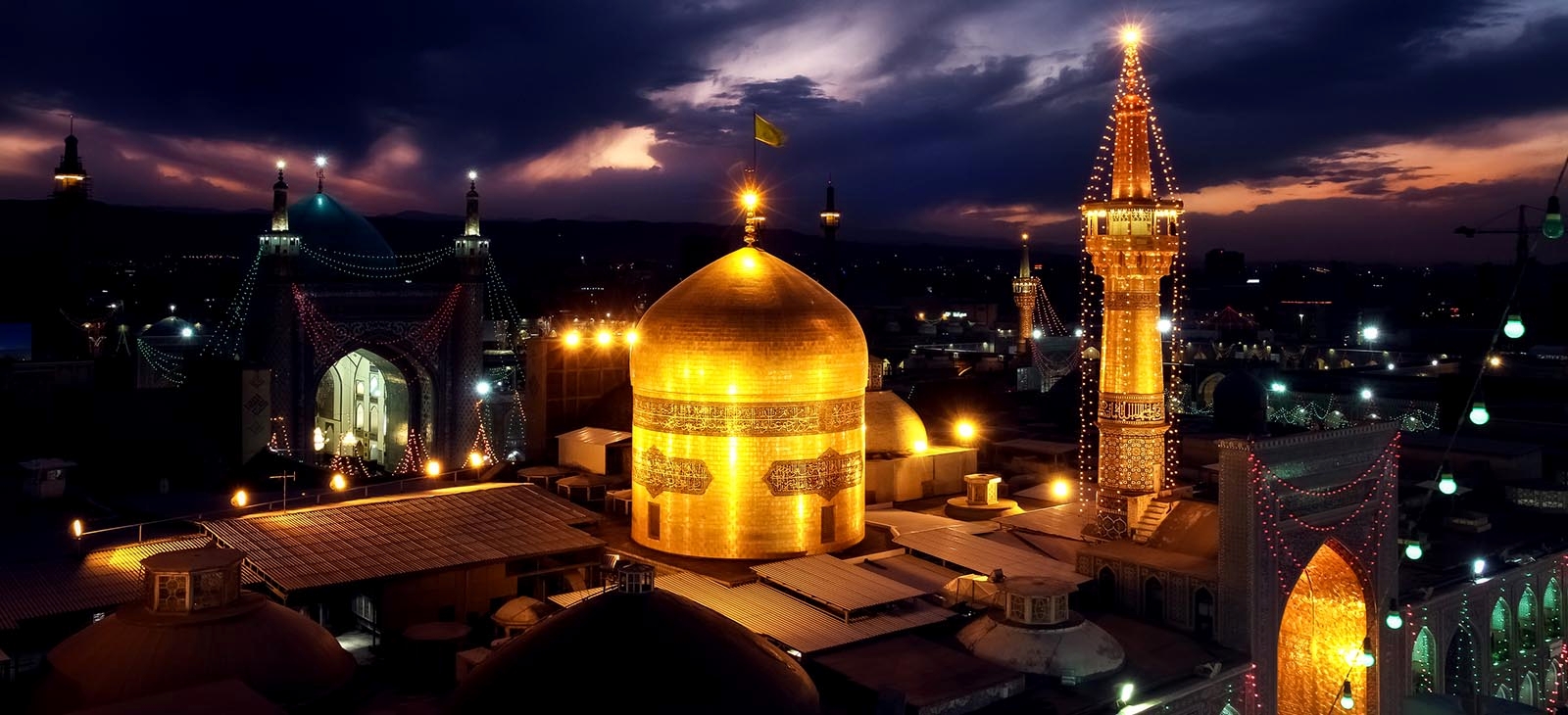Pilgrimage to the shrines of Imams is a specific Shia custom. The most important shrines in Iran are those for the Eighth Imam in Mashhad and for his sister Fatima in Qom. There are also important secondary shrines for other relatives of the Eighth Iman in Rey, adjacent to south Tehran, and in Shiraz. In virtually all towns and in many villages there are numerous lesser shrines, known as imamzadehs
- Shrine
Pilgrimage to the shrines of Imams is a specific Shia custom. The most important shrines in Iran are those for the Eighth Imam in Mashhad and for his sister Fatima in Qom. There are also important secondary shrines for other relatives of the Eighth Iman in Rey, adjacent to south Tehran, and in Shiraz. In virtually all towns and in many villages there are numerous lesser shrines, known as imamzadehs, which commemorate descendants of the imams who are reputed to have led saintly lives. Shia pilgrims visit these sites because they believe that the imams and their relatives have power to intercede with God on behalf of petitioners. The shrines in Iraq at Karbala and An Najaf are also revered by Shias.
There are more than 1,100 shrines that vary from crumbling sites associated with local saints to the imposing shrines of Imam Reza and his sister Fatima in Mashhad and Qom, respectively. These more famous shrines are huge complexes that include the mausoleums of the venerated Eighth Imam and his sister, tombs of former shahs, mosques, madrasehs, and libraries. Imam Reza's shrine is the largest and is considered to be the holiest. In addition to the usual shrine accoutrements, Imam Reza's shrine contains hospitals, dispensaries, a museum, and several mosques located in a series of courtyards surrounding his tomb. Most of the present shrine dates from the early fourteenth century, except for the dome, which was rebuilt after being damaged in an earthquake in 1673. The shrine's endowments and gifts are the largest of all religious institutions in the country. Traditionally, free meals for as many as 1,000 people per day are provided at the shrine. Although there are no special times for visiting this or other shrines, it is customary for pilgrimage traffic to be heaviest during Shia holy periods. It has been estimated that more than 3 million pilgrims visit the shrine annually.
Visitors to Imam Reza's shrine represent all socioeconomic levels. Whereas piety is a motivation for many, others come to seek the spiritual grace or general good fortune that a visit to the shrine is believed to ensure. Commonly a pilgrimage is undertaken to petition Imam Reza to act as an intermediary between the pilgrim and God. Since the nineteenth century, it has been customary among the bazaar class and members of the lower classes to recognize those who have made a pilgrimage to Mashhad by prefixing their names with the title mashti.
The next most important shrine is that of Imam Reza's sister, Fatima, known as Hazarat-e Masumeh (the Pure Saint). The present shrine dates from the early sixteenth century, although some later additions, including the gilded tiles, were affixed in the early nineteenth century. Other important shrines are those of Shah Abdol Azim, a relative of Imam Reza, who is entombed at Rey, near Tehran, and Shah Cheragh, a brother of Imam Reza, who is buried in Shiraz. A leading shrine honoring a person not belonging to the family of Imams is that of the Sufi master Sayyid Nimatollah Vali near Kerman. Shias make pilgrimages to these shrines and the hundreds of local imamzadehs to petition the saints to grant them special favors or to help them through a period of troubles.
Because Shias believe that the holy Imams can intercede for the dead as well as for the living, cemeteries traditionally have been located adjacent to the most important shrines in both Iran and Iraq. Corpses were transported overland for burial in Karbala in southern Iraq until the practice was prohibited in the 1930s. Corpses are still shipped to Mashhad and Qom for burial in the shrine cemeteries of these cities.
The constant movement of pilgrims from all over Iran to Mashhad and Qom has helped bind together a linguistically heterogeneous population. Pilgrims serve as major sources of information about conditions in different parts of the country and thus help to mitigate the parochialism of the regions. Read more

